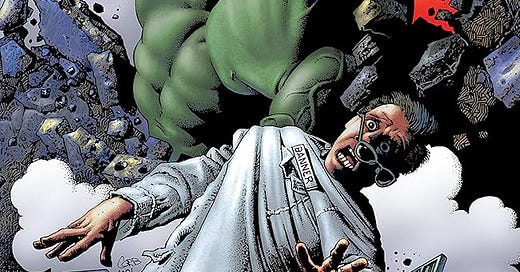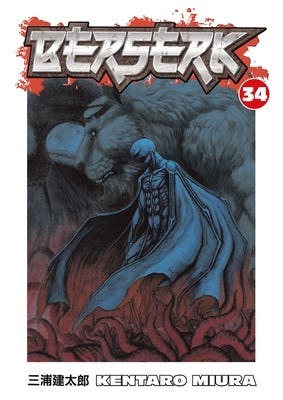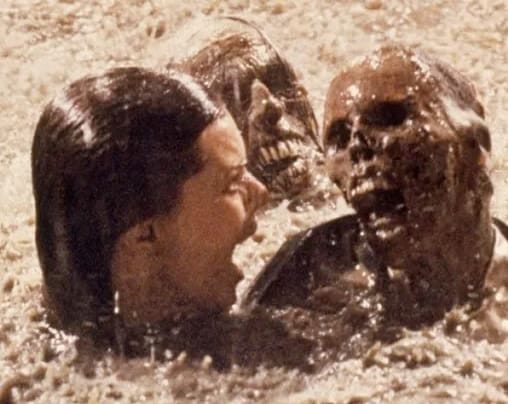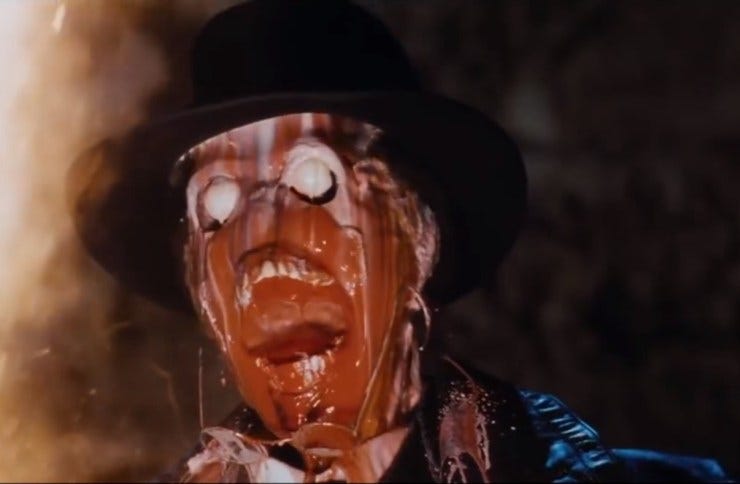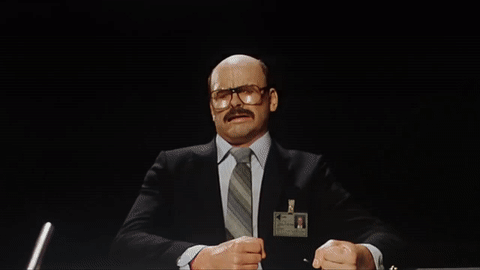To wrap up this miniseries on comics, let’s bring it back to where we started and talk about defending comics from book ban-ers. Or banners. I’ll just call them banners, that makes more sense to my brain.
A Refresher On What I Consider A Ban
Placement of any barrier between a book and its intended audience is banning behavior.
I’m going to try and keep this fairly specific to comics because there’s lots of advice out there for fighting non-specific book ban types, and I really want to talk about comics.
The Misunderstanding That All Comics Are For Kids
I can understand where some people get this mistaken impression, but the truth is that many comics are NOT for kids.
This is something many different forms of entertainment have gone through.
Home video game consoles and the games you could play on them were kind of considered “for kids,” partially because the Nintendo Entertainment System, which dominated that market, was, generally, pretty family friendly. I mean, the opening cutscene of Double Dragon involves a dude punching some lady in the stomach and then carrying her off over his shoulder, but they DID edit out the butt shot from the arcade version. Insert your own thoughts about sex v. violence here.
This became a bit of a problem in the 90s when games like Doom and Mortal Kombat hit the scene, games that probably weren’t intended for kids, but that used the same hardware previously earmarked for coin collecting to show a man ripping another man’s spine from his body.
Animation is also this way. People felt animation was for children because, for a long time, it had been. When things like The Simpsons and Beavis and Butthead came along, they were very controversial because people saw animation, assumed they were for kids, and were, understandably, not happy about it.
And I think what all these examples share is that parents sometimes see their forms as a trap, a lure to attempt to get kids to play, watch, and read things they really shouldn’t. But it’s not a trap, nobody is trapping your child by creating a comic intended for adults.
I think the first step in the defense of a comic is to figure out whether the person is under the false impression that comics are for kids and kids only, and trying to determine whether the comic they’re objecting to is way outside the norm in terms of what’s common in the world of comics. It may be useful to bring animation into the discussion and talk about how some animation is definitely not for kids. It may be useful to talk about superhero movies and to point out that the Deadpool movies are probably not appropriate for most kids.
The idea is to hopefully persuade the person into seeing that the assumption at the core of their issue (comics are for kids) was incorrect. For some, this may resolve the issue. They probably won’t concede and just walk away, but it helps to make a rational, solid argument to start.
The Miller Test And The Advantage of Filthy Artwork
No, not The Frank Miller Test, which is…I don’t even know what that’d be, but I suspect it’d be quite different from the Bechdel Test.
I mean the test often used by courts to determine whether something is obscene.
There are three parts of the test, and if the material in question passes ANY of them, the material should not be considered obscene.
Here they are:
(1) whether the average person applying contemporary community standards would find the work, taken as a whole, appeals to the prurient interest;
(2) whether the work depicts or describes, in a patently offensive way, sexual conduct specifically defined by the applicable state law; and
(3) whether the work, taken as a whole, lacks serious literary, artistic, political or scientific value.
Now, my advice, when using the Miller Test with a book banner, is to start off by asking them what they know about the test (it will probably be nothing), and then saying that it’s a test that came straight from the U.S. Supreme Court in 1973. I think people like hearing that it came from a high authority, and they like that it’s from the 70s, that means it’s been around, and, to be honest, I think people assume there’s a chance it’ll be on the conservative side.
Emphasize that in order to be obscene, a material must meet ALL THREE criteria in order to be called obscene. This is very important as lots of works will fail one, maybe even two, but it’s not a majority thing, it’s not a 2/3 thing, it’s all or nothing.
The artwork in comics is not going to be of much help for parts 1 and 2, but it’s in 3 that it comes in handy.
We talked about Berserk before, and that’s a comic that contains lots of objectionable material.
AND, it would be impossible to say it lacks artistic value:
It may not be artwork that you want to hang in your living room, but remember, that’s not the standard.
The standard is not whether you think the artwork is good enough to justify the book’s contents.
The standard is not whether the artwork is offensive.
The standard is not whether the artwork is inappropriate for children.
The standard is that the artwork has serious artistic value.
This is where the artwork is to comics’ benefit. It’d be damn near impossible to argue that this contains no artistic merit:
A Presentation
Here’s a still from Watership Down (PG):
Here’s a line from THE TRAILER for Bad News Bears (PG), delivered by an 11 year-old:
"J*ws, sp*cs, ni**ers, and now a girl?"
Here’s a shot from Poltergeist (PG) where the actress is in water with actual human skeletons, not movie props:
I’m guessing you all recall THIS sequence from a PG film:
Now, my point is not that there are worse things out there than comics. I don’t really find that to be a compelling way to prove the value of something, “There’s something worse, so anything less bad should be permissible.” By that logic, because I ate a hamburger with donuts for a bun yesterday, I can eat the same hamburger today, minus donut bun, and be a-okay!
What we see above is one frame of about 173,000 in Raiders of the Lost Ark.
Berserk has a ballpark of 45,000 to 50,000 panels, 9,200 pages in all. Even a generous handful of pages out of that 9,200 doesn’t represent much in terms of fraction of the whole.
Comics, unlike other forms, make it very easy to select a single frame from a whole, very long work, and use that to make the case about whether or not something is appropriate for not only A child, but ANY child.
It’s easier to do it with comics than it is print-only books, movies, music. Comics make it very easy to remove images from any kind of context. But the reality is that plenty of media contains plenty of disturbing stuff, and it hits different, as the kids say, when it’s a single still, captured mid-face-melt.
Personally…I would probably show Raiders to a kid. I might cringe a bit when heads are melting and so on, but, hey, it’s a great movie, and I don’t think it’s so harrowing that a kid can’t handle it. And I don’t think this one frame represents the whole, and using it as a stand-in for the whole is disingenuous. It makes it seem like Raiders of the Lost Ark is a David Cronenberg movie or something.
Remind Them of the Golden Library Rule
I said I wasn’t going to talk about all book types, but we have to because I just can’t leave it alone.
Leaving something on the library shelves, or discovering upon getting home that a material is not appropriate for you and putting it down, is a perfectly reasonable decision to make.
When you engage in banning behavior, you’re saying the material isn’t appropriate for ANYONE.
You, standing across the room from me, are telling me that Berserk is not appropriate for me.
I majored in English in college, and I don’t just say that to brag about my current income level (because WOWZA!), I say that because I read A LOT of books, a lot of classics, some comics (there was a graphic novels class!), tons of poems, old shit, new shit—I not only read a lot of it, I discussed it, talked about the merits, talked about interpretations, talked theory.
I worked as a librarian in a public library for 15 years. I ran book clubs for kids, teens, and adults.
I’ve been tracking what I read on Goodreads pretty religiously. I’ve counted up 2,748 titles.
I’ve written about a dozen books of my own.
I would put my experience with books and education in literature against anyone’s. I wouldn’t always win, but, boy, I like my odds when we’re talking about some random individual off the street, and I like my odds even better against someone who thinks banning books is a reasonable thing to do.
I don’t know what other qualifications I can bring to the table to prove to you that I am more than capable of deciding what is and isn’t appropriate for me.
And yet, somehow, you, book banner, presume to know, better than I do, what’s appropriate for not just you, not just me, but everyone. Everyone in our service area. Every person in the room, every person in your child’s school, staff included, everyone at the university in town, everyone who is in the visual arts program, everyone studying Japanese—having never met most of these people, you are telling me that you’re confident that you know what’s best for them?
That’s what I find so interesting here: as the person who knows the most, I’m the one willing to admit that I know the least about what’s appropriate for any individual. I’m the most willing to leave that decision in their hands.
All I ask is that you do the same.
